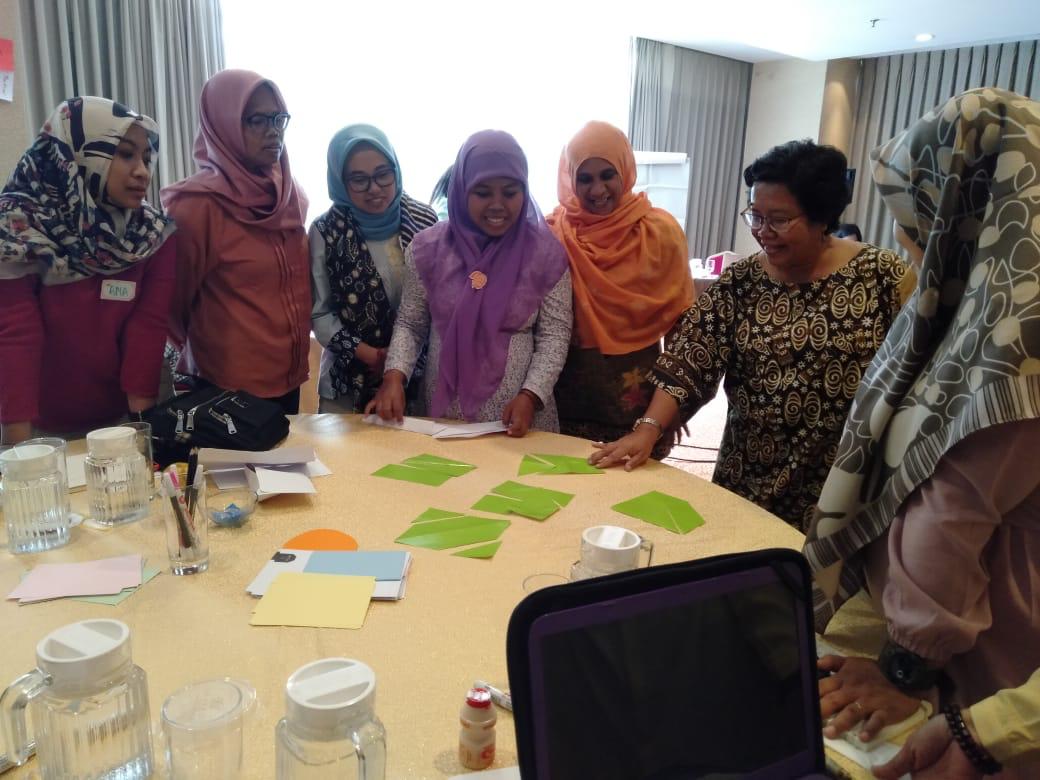



Gender inequality manifests around the world in vastly different forms because of distinct underlying roots and causes. Take for example the case of the United States versus the Southern African region. The United States is a wealthy and developed nation, whereas Southern Africa is a developing region which only gained independence from colonizers in recent history. Despite these differences, both societies have perpetuated gender inequality, which can be identified in the informal sector of indigenous and rural societies in Southern Africa and the corporate sector of the United States. However, in both situations, women face crippling inequality, with feminists promoting collective action and support as the solution.
Many Southern African women face the reality of widespread maltreatment and sexual harassment, both in the private and public sphere due to cultural and religious norms around gender. Conservative culture has resurged through the rise of the Pentecostal Christian Church, which espouses doctrines originally introduced by Christian colonial missionaries. Southern African elites have flocked to the Pentecostal Christian Church, legitimizing its retrogressive beliefs towards women. Some civil society leaders publicly endorse religious conservativism, suggesting that these beliefs ought to frame the law. As the line between the church and the state has grown progressively murkier, the church’s control over society has increased, while the power of the state simultaneously decreases. Furthermore, the role of religion within organizations not affiliated with the church has also increased. Now, for example, it is customary for business meetings to begin and end with prayer. The Christian revival has led to an intolerance of other religions and LGBT within Southern Africa as well.
In rural and indigenous communities, restrictions on female economic agency also drives gender inequality, as women are primarily dependent upon fathers and husbands for their livelihood. Women are not permitted to own land and many girls are married off at young ages (also promoted by the Pentecostal Christian Church) for the financial benefit of the father or male figure in their life. In some cases, after a man assaults a woman, he claims that he loves her, and therefore marries her, paying her father labola (similar to a dowry) in order to atone for his crime.[1] With limited financial agency, women often have no choice but to obey the desires or commands of their father and aggressor, thereby remaining in abusive relationships not by choice, but out of necessity. Notably, this overarching theme of women’s dependence on abusive partners is not unique to Southern Africa, but experienced by women in many parts of the world, elucidating the intersection between economic freedom and the autonomy women enjoy in the public and private spheres.
Complicating the matter, extractivism, or the centering of the economy on natural resource extraction, has propelled corrupt bureaucrats and their local barons to seek land acquisitions, imposing another barrier upon female financial agency. This practice reduces the land available for agricultural work, which is the main income source of most women living in rural areas. These corrupt dealings also take place on public land, usually tended and maintained by women, producing constrained gendered roles in traditional agrarian societies. Women typically cannot take part in these local dealings because of their inability to own land and barriers to their participation in local government. Unlike men, women are unable to leave their land, as they are the primary laborer and rely on the fruit of their work to feed themselves and their dependents. Leaving the land could therefore potentially lead to the starvation of entire families, a risk that women are not willing or able to take. Men may purchase new land as long as they are able to afford it, however, this privilege does not apply to women.[2] These particular manifestations and consequences of sexism are varied and complex, but this much is clear: women living in Southern Africa face extreme barriers to autonomy in comparison to men.[3]
Patriarchal customs are, however, common practice across the globe, with culturally-specific manifestations. In the United States, the patriarchy has taken on a largely symbolic nature—as the United States has legal and political protections for women, but not economic and cultural protections— reaffirmed by the threat of sexual violence. The patriarchy and its related limitations manifest in the social sphere, where interpersonal interactions cease to have legal ramifications. Subtle cues that begin from birth convey default male superiority. Examples of gender stereotypes include the idea that women are inherently maternal, communal, or passive. Women’s contributions within both the home and workplace are therefore systematically devalued; their behaviors are assumed to be innate characteristics, undeserving of compensation. For example, mentoring in the office (sometimes referred to as ‘office housework’) often falls on women. Other instances consist of tolerating or praising male assertiveness in the work place while regarding women exhibiting equally-assertive behaviors as “bossy” or “aggressive.” Women are expected to be maternal and passively perform tedious work unrelated to their job, all of which constitutes unpaid labor.[4] Sexist social cues, with their small immediate impacts, also have significant consequences on the psychology of American women, who experience depression at roughly twice the rate of men.[5]
One of the most notable instances of gender discrimination in the work place occurs around the time that women are expected to start having children. When men announce their wives are pregnant, their co-workers respond with congratulations and joy, reflecting cultural customs which state that as a man, starting a family will be an incentive for working harder. When a woman announces she’s pregnant, her boss may respond with initial excitement and later with anger at the implications of how her maternity may affect workplace productivity: “One pregnant respondent described a recent incident with her boss: ‘He turned to me and lashed out and said, Are you even going to come back? I guess you won’t even tell us if you’re not. You’re probably going to stay home and play with the baby. He was angry. . .’”[6] Women can’t win. Caught in a Catch-22, women are expected to take a leave of absence after their child is born, yet are frowned upon for doing so. Absence of staff in the workplace often implies more work for the supervisor and the headache of hiring another employee. Therefore, when women return to work, they must overcompensate for their temporary absence. In one example, a woman was documented working in her recovery room after she had a C-section.[7] Moreover, the expectation of women to permanently leave the workplace after childbirth can also increase difficulty of obtaining mentorship. Senior executives often prioritize the hiring of male employees over female employees because their perceive men as a more financially-secure investment.[8]
Inequality is further reflected in the gendered make-up of corporate America, where only 14.6% of executive positions held by women.[9] This overwhelming male authority often leaves women vulnerable to coercion by superiors. A 2011 study ascertained that 38% of employed women have experienced some form of sexual harassment.[10]
Needless to say, these macho manners of conducting business are counterproductive:
When more women lead, performance improves. Start-ups led by women are more likely to succeed; innovative firms with more women in top management are more profitable; and companies with more gender diversity have more revenue, customers, market share and profits. A comprehensive analysis of 95 studies on gender differences showed that when it comes to leadership skills, although men are more confident, women are more competent.[11]
While the issues women face in these two regions differ vastly, the solutions for combatting gender-based biases and discrimination are similar. In the context of Southern Africa, safe spaces and activism—advocating for women’s rights in the face of injustice—are cited as solutions. A safe space, as defined by Just Associates, is “a place for members to reflect on their own challenges in order to shift their perception of their situation.”[12] Safe Spaces are both physical and metaphorical locations, where women help other women during decision-making processes and encourage each other to seek equality. These spaces improve the lives of women because building trust within groups of women (often simultaneously activists), gives way to collective movement-building opportunities and shared political agendas. In the United States, the organization Lean In affirms the importance of safe spaces for women, suggesting the construction of Small Peer Groups where individuals meet and support each other, participating in peer mentorship. Through these groups, individuals are propelled to advocate for standardized reviews and gender equality. Lean In has created 35,000 circles, and 85% of circle members have attributed a positive change in their life to the peer support that the circle offers.[13] In both the South African and U.S. contexts, varying tremendously in circumstances and locations, collective action and advocacy is changing the lives of women for the better.
[1] https://justassociates.org/sites/justassociates.org/files/between-jesus-generals-invisibles-e-win-jass-sna.pdf (page 25)
[3]All evidence of gender inequality in Southern Africa came from: https://justassociates.org/sites/justassociates.org/files/between-jesus-generals-invisibles-e-win-jass-sna.pdf
[4] https://www.nytimes.com/2015/02/08/opinion/sunday/sheryl-sandberg-and-adam-grant-on-women-doing-office-housework.html
[6] Turco, Catherine J. “Cultural Foundations of Tokenism: Evidence from the Leveraged Buyout Industry.” American Sociology Review, vol. 75, no. 6, Dec. 2010, pp. 902.
[7] Ibid.
[8] Ibid.
[9]https://www.americanprogress.org/issues/women/reports/2014/03/07/85457/fact-sheet-the-womens-leadership-gap/
[10] https://www.nsvrc.org/sites/default/files/publications_nsvrc_overview_sexual-violence-workplace.pdf
[11] https://www.nytimes.com/2014/12/07/opinion/sunday/adam-grant-and-sheryl-sandberg-on-discrimination-at-work.html